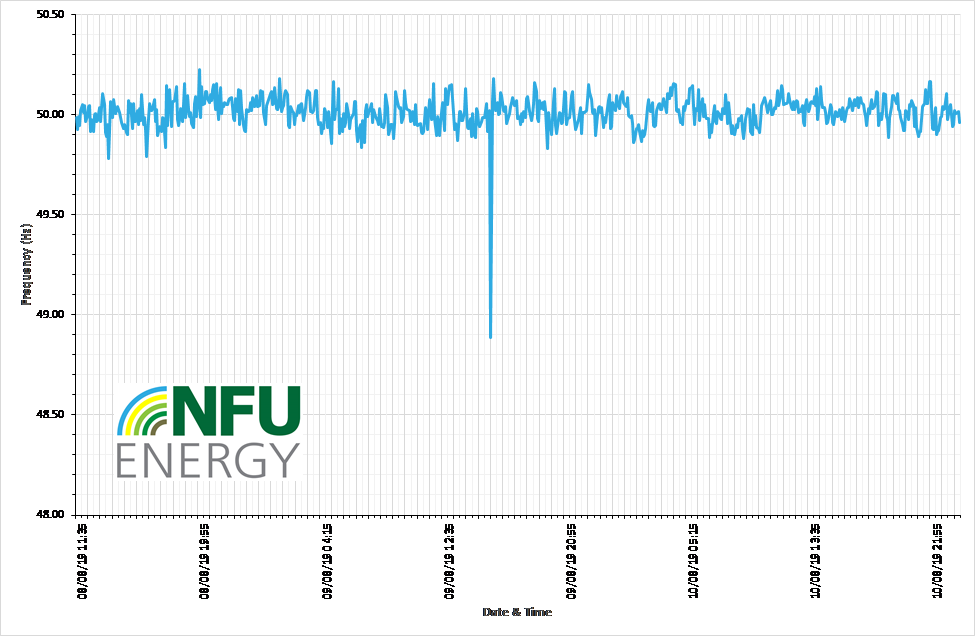The Government will shortly be issuing a verdict on National Grid’s handling of the blackout a couple of weeks ago.
What happened?
Britain’s most severe blackout in more than a decade caused rush hour travel disruption across the UK’s biggest train stations, railways, roads and airports in the evening of Friday 09 August. Which left almost a million homes across the country in the dark.
National Grid blamed the “rare and unusual event” on a severe drop in the grid’s frequency, a measure of energy intensity flowing around the network, following a pair of major generator outages.
A key part of the operator’s job is to keep the frequency of the grid steady at around 50Hz. A deviation of more than 1% in either direction is enough to cause parts of the energy system to automatically shut down as a safety precaution.
The blackout took place after two near-simultaneous power plant outages at the Little Barford gas-fired power plant and the Hornsea offshore wind farm. This caused the frequency to drop below the grid’s safety limits.
Why is grid frequency a problem?
Whenever you turn on your kettle, phone charger or any other electrical appliance in the UK, the power that comes out is what we call alternating current (AC). That means it is alternating between positive and negative voltage.
This oscillation is known as electrical frequency. The alternating current that oscillates 50 times a second, as it does in the UK, is said to have a frequency of 50 hertz (50Hz).
How was it dealt with?
Changes in supply and demand for electricity can have a major effect on the frequency of the grid. For instance, if there’s more demand for electricity than there is supply, the frequency will fall. Or if there is too much supply, the frequency will rise.
The margin for error is very small. In fact, any power with a frequency as little as one per cent above or below the standard 50Hz risks damaging equipment and infrastructure if it persists. You can see how far the country’s frequency is currently deviating from 50Hz here.
In the UK, the job of managing electrical frequency falls to the National Grid. To ensure stability, the Grid contracts power generators like Drax power station to provide frequency response services. Then when the frequency changes on the grid, Drax’s generating units can automatically respond.
If the frequency rises, the turbine reduces its steam flow. If the frequency falls, the steam flow will increase. In the case of generating units at Drax power station that response bursts into action less than a single second from the initial frequency deviation.
Find out how we can help you keep up to date with the world of energy and all your energy needs give the team a call on 024 7669 6512.



